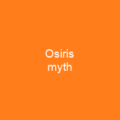Isis: The Enchanting Goddess Whose Legend Endures
Imagine a world where a single goddess could weave her magic across continents, from ancient Egypt to Rome. That is the story of Isis, one of the most captivating and enduring figures in religious history. From her humble beginnings as a minor deity in the Old Kingdom to becoming the central figure of worship during the Ptolemaic era, Isis’s journey is nothing short of legendary.
The Birth of a Goddess
Isis first appeared on the scene during the late Predynastic Period (before 3100 BCE), but it was in the Old Kingdom (c. 2686 – c. 2181 BCE) that she truly came into her own. As one of the main characters in the Osiris myth, Isis resurrected her slain brother and husband, Osiris, and gave birth to their son, Horus. This narrative not only solidified her role as a divine mother but also established her as a protector and savior.
Isis’s Role in the Afterlife
In the afterlife beliefs of ancient Egypt, Isis played an essential part. She was believed to help the dead enter the Duat (the underworld) by restoring their breath and life, much like she had done for Osiris. This role as a divine mother extended beyond the mythological realm, with many Egyptians invoking her protection in funerary contexts.
The Spread of Isis’s Worship
During the New Kingdom (c. 1550 – c. 1070 BCE), Isis’s influence grew significantly. She absorbed traits from other goddesses, broadening her significance and making her a central figure in funerary practices and magical texts. By the first millennium BCE, Osiris and Isis had become the most widely worshipped deities in Egypt.
The Hellenistic Period
With the rise of Greek rule over Egypt during the Hellenistic period (323–30 BCE), Isis’s worship spread even further. She was often paired with a new god, Serapis, and her cult reached across the Mediterranean world. As Hellenistic culture merged with Roman influence in the first century BCE, the cult of Isis became an integral part of Roman religion.
Isis in the Roman World
The worship of Isis continued to flourish during the Roman era. Her temples were constructed and enlarged by Ptolemaic kings, drawing pilgrims from across the Mediterranean. In Rome itself, shrines dedicated to her were established on the Capitoline Hill, though they faced destruction in the 50s and 40s BCE.
Isis’s Roles and Attributes
Isis was more than just a mother figure; she embodied numerous roles. She was associated with fertility, kingship, divine regeneration, and even magic. Her image appeared in various forms of art and amulets, making her one of the most commonly invoked deities during Roman Egypt’s time.
The Cult of Isis
Isis’s cult had no firm dogma but was characterized by its diverse practices and beliefs. She was invoked to protect women in childbirth, serve as a patroness of women, and even govern the cosmos. Her roles were so numerous that she was called ‘myrionymos’ (one with countless names) and ‘panthea’ (all-goddess).
Isis’s Influence on Art and Society
The imagery of Isis outside Egypt was Hellenistic in style, reflecting her various roles. Adherents came from all levels of society, and the cult did not require exclusive worship. Women were more strongly represented than in most Greco-Roman cults, though their participation may have been greater due to underrepresentation in Roman inscriptions.
Isis’s Festivals and Practices
The cult of Isis celebrated several important festivals throughout the year. The Navigium Isidis in March honored her influence over the sea, while the Isia festival in late October and early November reenacted her search for Osiris. These practices continued until at least 417 CE, with some customs incorporated into Christian traditions.
Isis’s Legacy
The memory of Isis survived ancient Egypt’s extinction of her worship and influenced modern European thought. From Giovanni Boccaccio’s biography to the Great Goddess in Neopagan witchcraft, Isis continues to captivate the imagination. Today, she is a symbol of nature and female divinity, with her name and image appearing in works of fiction, advertising, personal names, and modern esoteric belief systems.

Isis’s enduring legacy is a testament to her power and influence. From ancient Egypt to modern times, she has remained a symbol of divine motherhood, magic, and protection. As we continue to explore the rich tapestry of her story, one thing remains clear: Isis’s legend will live on for generations to come.
You want to know more about Isis?
This page is based on the article Isis published in Wikipedia (retrieved on January 3, 2025) and was automatically summarized using artificial intelligence.







